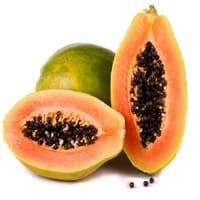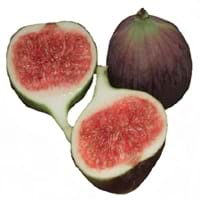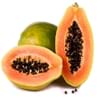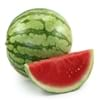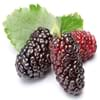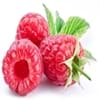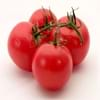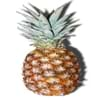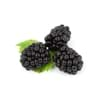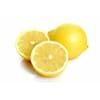Health Benefits
Arthritis prevention, Asthma treatment, Cancer prevention, Heart care, Prevents macular degeneration, Prevents rheumatoid
Cancer prevention, Controls blood pressure, Heart care, Increase in haemoglobin, Prevents constipation, Prevents macular degeneration, Reduces nervous tension
General Benefits
Anti-inflammatory properties, Boosts immune system, Digestive aid, Healing of wounds, Maintains healthy cholesterol level, Strengthens bones
Controls blood pressure, Helps in weight loss, Maintains healthy cholesterol level, Strengthens bones
Skin Benefits
Anti-aging benefits, Hydrates skin, Skin revitalization, Treatment of acne, Treatment of dark spots
Brightens and lightens complexion, Hydrates skin, Skin rejuvenation, Treatment of acne
Hair Benefits
Good conditioner, Promotes longer and healthier hair, Softening mask, Treatment of dandruff
Good conditioner, Regulates hair growth, Softening mask
Allergy Symptoms
Abdominal pains, Carotenemia on excessive consumtion, Latex Allergy
Abdominal pains, Anaphylaxis, Coughing, Headaches, Hives, Itching, Nasal congestion, Skin rash, Sneezing, Sore throat, Swelling of hands
Side Effects
Allergic reaction, Skin problems, Possibly unsafe during pregnancy
Allergic reaction, Skin rash, Possibly unsafe during pregnancy
Best Time to Eat
As a snack in the late afternoon, Don't consume at night and before bed, Don't eat after meal
Best if taken as a breakfast (or empty stomach), Don't consume at night and before bed, Morning time (before lunch)
Vitamin B5 (Pantothenic Acid)
Vitamin C (Ascorbic Acid)
Vitamin K (Phyllochinone)
Phytosterol
Not Available
Calories in Fresh Fruit with Peel
Not Available
Calories in Fresh Fruit without Peel
Not Available
Type
Melon, Tree fruit
Tree fruit
Season
All seasons
Summer, Winter
Varieties
Coorg Honey Dew, Pusa Dwarf, Pusa Giant, Pusa Majesty, Pusa Delicious, Pusa Dwarf, Solo, Ranchi, Taiwan-785 and Taiwan-786
Abyad, Adriatic, Alma, Atreano, Bataglia, Black Bethlehem, Black Madeira, Black Mission, Brown Turkey, Sierra, Calimyrna, Kadota, Deanna, Figoin and Hardy Chicago Fig
Color
Orange, Yellow
Green, Purple, Red
Taste
Luscious, Sweet
Sweet
Origin
Mexico, Central America
Western Asia
Soil Type
Rocky, Sandy, Well-drained
Clay, Limestone, Loam, Sandy
Climatic Conditions
Warm, Without frosts
Dry, Warm
Facts about
- Papaya seeds show contraceptive effects in male monkeys.
- Their seeds are used as a replacement for black pepper in some nations due to peppery taste.
- Papaya is known by funny names like paw paw or papaw and the mamao.
- Fig tree is considered as a symbol of abundance, fertility and sweetness.
- The fig is made up of 55% of natural sugar so they are the sweetest fruits.
- Figs are used as a fat substitute in recipes.
Top Producer
India
Turkey
Other Countries
Brazil, Indonesia, Mexico, Nigeria
Albania, Algeria, Brazil, Egypt, Iran, Morocco, Syria, Tunisia, United States of America
Top Importer
United States of America
France
Top Exporter
Mexico
Turkey
Botanical Name
Carica papaya
Ficus carica
Synonym
Not Available
Not Available
Subkingdom
Tracheobionta
Tracheobionta
Division
Magnoliophyta
Magnoliophyta
Class
Magnoliopsida
Magnoliopsida
Subclass
Dillenhidae
Alismidae
Order
Brassicales
Rosales
Family
Caricaceae
Moraceae
Species
C. papaya
Ficus carica
Generic Group
Papaya
Mulberry
Difference Between Papaya and Fig
We might think that Papaya and Fig are similar with respect to nutritional value and health benefits. But the nutrient content of both fruits is different. Papaya and Fig Facts such as their taste, shape, color, and size are also distinct. The difference between Papaya and Fig is explained here.
The amount of calories in 100 gm of fresh Papaya and Fig with peel is Not Available and 74.00 kcal and the amount of calories without peel is 43.00 kcal and Not Available respectively. Thus, Papaya and Fig belong to Low Calorie Fruits and Low Calorie Fruits category.These fruits might or might not differ with respect to their scientific classification. The order of Papaya and Fig is Brassicales and Rosales respectively. Papaya belongs to Caricaceae family and Fig belongs to Moraceae family. Papaya belongs to Carica genus of C. papaya species and Fig belongs to Ficus genus of Ficus carica species. Beings plants, both fruits belong to Plantae Kingdom.
